National parks are the public lands or bodies of water of special environmental, historical, and other importance, which bear the status of governmental institutions. 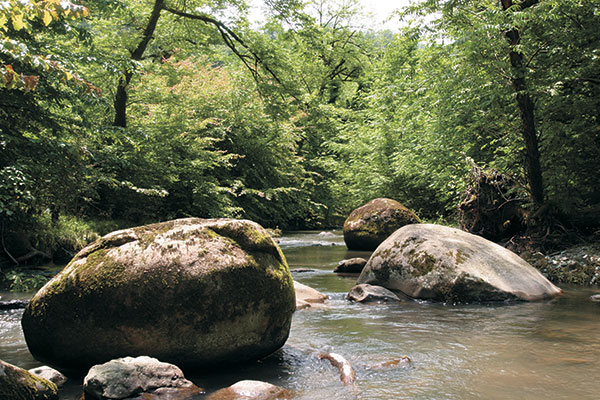
Name: Hirkan National Park
Year of foundation: 2004
Area (hectare): 40358
Location: Within the territory of Lankaran and Astara administrative districts.
Brief description: The Hirkan National Park is in the Lankaran natural region and protects the landscapes of humid subtropics. The Hirkan National Park consists of a valley area of Lankaran lowland and a mountainous landscape of Talysh Mountains. The Lankaran natural region has rich fauna and flora including many rare and endemic species. Flora of the park consists of 1, 900 species including 162 endemics, 95 rare, and 38 endangered species. There is the iron tree, three-thorned acacia (Gleditschia tricanthos), Zelkova, Quercus Castaneifolia, Fircus hyrcanys, etc. There are many endemic are rare animals, particularly, among the representatives of ground mollusks and non-flying insects. Birds' endemism is well represented, up to subspecies level, while the species level has a relatively poor representation. The main protected objects are the natural complexes of lowland and low mountainous forest areas of the Lankaran natural region, including the unique well-preserved plot of lower forest, the ecosystem of the rare forest of the Hirkan type.
Name: Shirvan National Park
Year of foundation: 2003
Area (hectare): 54373,5
Location: Within the territory of Salyan administrative district as well as Garadagh and Neftchala districts of Baku city.
Brief description: The Shirvan National Park was established on the base of the Shirvan State Reserve founded in 1969 and neighboring areas. The reserve‘s activity is focused on the protection and reproduction of the Persian gazelle (Gazella sulgutturosa), waterfowl birds, and typical plant biotypes of the Shirvan Lowland. The area is 25800 hectares, of which 3500 hectares are water reservoirs. The territory of the park used to be at the bottom of the Caspian and at present it is an accumulative plain, which is 20-25 m below sea level with a slight increase in the relief westwards. In terms of climate, the park lies in an area of moderate warm semi-desert and arid steppe. Summers are hot and dry and winters are moderate and dry. In the park, there are several types of vegetation. The desert type is represented by Halocnemum, Halostachys, and Salicornia formations developed on solonchaks. Halocnemum vegetation occupies about 40% of the territory of the park. The main species is the Halocnemum strobilaceous. The Halostachys phylogenesis has a more complicated structure and a richer species composition than halocnemum. At the tops of the hills, halostachys grows and the slopes are covered by cereals and motley grass from the ephemeral group. Salicornia vegetation has developed in a small area of the central part of the park as a result of wet salines and the high level of groundwaters. As well as Salicornia europaea, there is also rankenive and tonkokhstnik.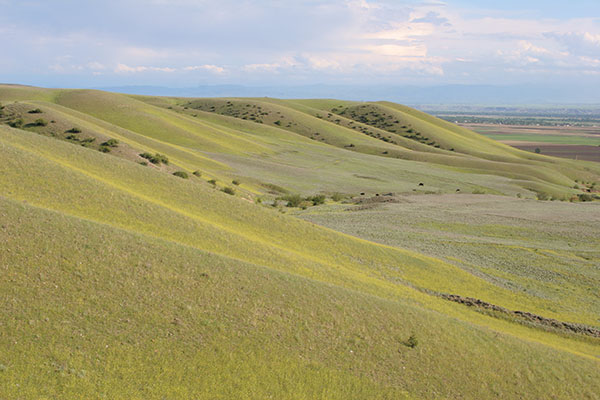
The semi-desert type of vegetation is represented by formations of sveda and ephemeral wormwood. The latter formation, which occupies 40% of the park area, has the richest species composition. Wormwood dominates, and among ephemera 20-25 species are met, including mast cereals: Poa bulbosa, Bromus, wall barley (Hordeum leporinum), etc. Meadow-type vegetation is developed in the park on chals (humid lowerings on the relief). The herbage is two-layered and is formed of Alhagi (first layer) and Aeluropus repens (second layer). In some places, Artemisia and wall barley (Hordeum leporinum) are found. The fauna is poorly studied. Among amphibians there are green toad, Hylidae and lake frog. Among reptiles there are swamp, Caspian and Mediterranean turtles, lizard, water snake (Natrix natrix) and water snake, Vipera lebetina and others. The ornitofauna is poorly studied, but according to the existing data, there is bustard (Otides), Francolinus, little bustard (Otis tetrax), white-tailed eagle (Haliaeetus albicilla), steppe eagle (Aquila nipalensis), peregrine (Falco peregrinus), saker falcon (Falco cherrug) and Pterocletes orientalis. In winter, there are many migratory birds on the water bodies: gray goose (Anser anser), mallard duck (Anas platyrhynchus), pintail (Anas acuta), and others. Among rare mammals species, there are Persian gazelle (Gazella sulguturossa), wild boar, wolf, jackal, jungle cat (Felis chaus), fox, badger, European hare, and others. Persian gazelle (Gazella sulguturossa), Francolinus francolinus, bustard (Otidis), little bustard (Otis tetrax), white-tailed eagle (Haliaeetus albicilla), steppe eagle (Aquila nipalensis), peregrine (Falco peregrinus), saker falcon (Falco cherrug), and Mediterranean turtle are listed in Red Book. The main protected objects are the natural semi-desert complexes of the south-eastern Shirvan, with the world’s biggest population of Persian gazelle (Gazella sulgutturosa) and the water-wading ecosystem, which is a place of nesting, a migration route, and wintering area for many valuable bird species (western part of the Shor-Gel Lake).
 Name: Agh-Gol National Park
Name: Agh-Gol National Park
Year of foundation: 2003
Area (hectare): 17924
Location: Within the territory of Agjabedi and Beylagan administrative districts.
Brief description: The Agh-Gol National Park was established for the preservation of migrating routes, areas of wintering and nesting of waterfowl and water birds, as well as for breeding of commercial fish species. The area of 4400 hectares covers the water area of Lake Ag-Gel. Lake Ag-Gel (white lake) reserve is situated in the Mill steppe of the Kura-Araks Lowlands, it may be called an “ornithological oasis”: this is not only a reserved area but one of the most important places of wintering in the Republic. The Mill Steppe surrounding the lake is a slightly hilly accumulative plain, where mostly semi-desert and arid steppe type: summer is warm and dry, winter is cool. Twenty fish species inhabit the reserve: pike, erythroculter, mongolicus, carp, and others. Earlier, when the lake was connected with the River Kura, the Ichthiofauna was richer. Among amphibians, green toad, Hylidae, lake trod and others inhabit the reserve. Among reptiles, the Caspian and swamp turtles, common and water grass snakes occur. There are 134 bird species in the orilitofauna of the reserve, including 89 nesting birds. There are more than 30 specimens of Charadriiformes and 24 specimens of Anseriformes. Among the birds occurring here, there are species included in the “Red Book” — Francolinus, white-tailed eagle, white pelicans (Pelecanus onocrotalus), Dalmatian pelicans (Pelecanus Crispus), and others. Among mammals, represented by 22 species, wild boar, coypu and jungle cat (Felis chaus) are common, Unique colonial nesting places of Ciconifonnes and Totimplate birds (Pelecanifonnes) are preserved here, which are of great scientific and practical interest. The main protected objects are the water–swamp ecosystem of Lake Agh-Gol, places of mass nesting, places of rest during migration, and wintering for waterfowl and coastal birds.
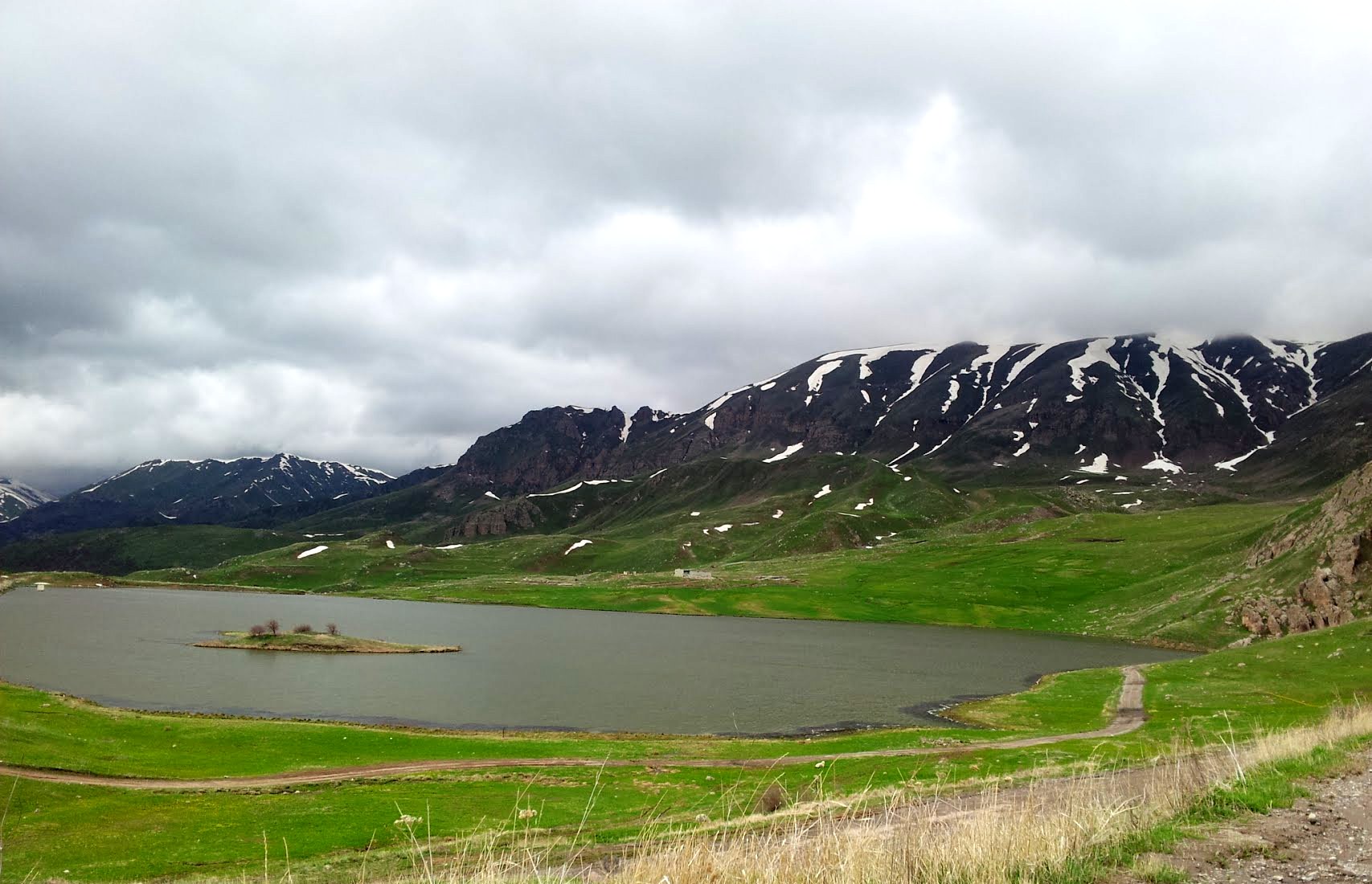
Name: Zangazur National Park named after Academician Hasan Aliyev
Year of foundation: 2009
Area (hectare): 42797,4
Location: Lesser Caucasus, Nakhchivan Autonomous Republic
Brief description: Zangazur National Park was created on 25 November 2009 in an area of 42797,4 hectares on the base of Ordubad National Park named after Academician Hasan Aliyev and Shahbuz State Nature Reserve in the Nakhchivan Autonomous Republic. It was named after Academician Hasan Aliyev who is considered as a founder of ecology in Azerbaijan. Adjoining the National Park is Ordubad State Nature Sanctuary with an area of 27870 hectares. The objective pursued in the creation of Zangazur National Park was to protect different components of the area which has a distinctive climate, terrain, and other physical geographical features as well as various animal species including endemics and species of fauna that are typical to this area. The park is also charged with the task to facilitate environmental monitoring and promote education and tourism. Zangazur's range of mountains reaching 3200 meters on average is the highest range of the Lesser Caucasus. The highest peak of the range making 3906 meters is located in the National Park. The last third part of the Zangazur range is Soyug Dagh (Cold Mountain) which also belongs to the National Park’s area. The height of Soyug Dagh varies within a range of 2000 to 3000 meters. This part of the mountain slopes down for 12 km to south and west. It comprises steep slopes with precipices and narrow spring valleys. Eroded rocks are widespread here. In Soyuq Dagh, ancient glacial relief declines and finally disappears downwards. Zangazur National Park is a mountainous area. Its climate is generally cold characterized by dry summer. The mean temperature is -30 °C to -10 °C in January and 10 °C 25 °C in July. The annual precipitation is 300-800 mm. The watercourse network of the region is composed of Gilanchay, Vanadchay, Duylunchay, Aylishchay, Ganzachay, Kotamchay, Kilitchay, and Ordubadchay rivers. They are fed by rains and melting snow. The Araz River forms the border with Iran. The landscape of the area varies in type. Mainly, dull brown, grassland dull brown, alluvial grassland, mountainous forest, turf-type mountainous grassland terrains prevail in the area. Nakhchivan Autonomous Republic is a distinguished place in Azerbaijan for the richness of its ornitofauna. There are 217 bird species and subspecies in the region of which 15 species are listed in the Red Data Book. These are Levant Sparrowhawk, great white pelican, dalmatian pelican, white-tailed eagle, lammergeyer, short-toed eagle, great bustard, little bustards, and other birds. Six species of amphibians occur in the area of Nakhchivan Autonomous Republic. Thirty-eight species and subspecies of reptiles are found in Nakhchivan Autonomous Republic. Of them, five are turtles, twelve species, and sub-species of snakes. Mediterranean spur-thighed tortoise, Caucasian pit viper, Trans-Caucasian rat snake are all under protection and listed in the Red Data Book. Sixty-two mammal species and subspecies occur in Nakhchivan. Thirty-two of them are found in the Zangazur National Park and Ordubad State Nature Sanctuary. These are blazilius horseshoe bat, southern horseshoe bat, porcupine, manul, bezoar goat, Caucasian muflon to mention a few. The park is a habitat for a number of carnivorous animals such as leopard, wolf, jackal, fox, striped hyena, badger, wild cat, and other predators numbering 12 species in total. Zangazur National Park is also rich in rare plants, 77 grow in the Park’s area. Iris elegantissima, Himantoglossum formosum, Dorema glabrum, and other plants can be found here. Along with the diverse flora and fauna, the Zangazur National Park is the place where there are a lot of natural and historical monuments.
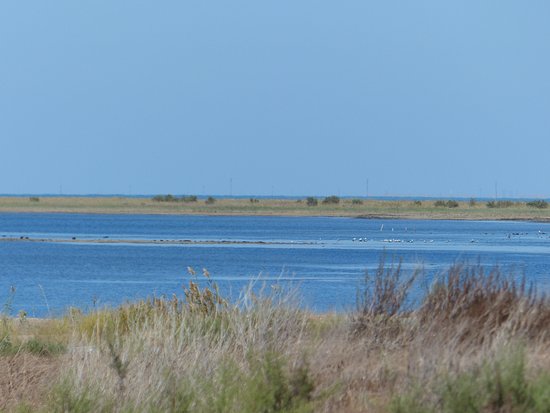
Year of foundation: 2005
Area (hectare): 783
Location: Khazar district of Baku city, Absheron peninsula.
Brief description: Absheron National Park was established on the basis of the Absheron State Nature Sanctuary in 783 ha area of administrative territory of Baku city Khazar district with the decree of the President of the Republic of Azerbaijan dated February 8, 2005. The National Park is situated in the south-eastern end of the Absheron peninsula in the Shah Dili territory. A mild hot climate of semi-desert and dry heathens prevails in the territory. The purpose of the establishment of Absheron National Park is the provision of protection of wildlife, maintenance of rare endangered flora and fauna species, as well as evaluation of existing natural opportunities for ecotourism. More than 50 bird and animal species are encountered in Absheron National Park. Nearly 25 plant species exist in the National Park.
 Name: Altyaghach National Park
Name: Altyaghach National Park
Year of foundation: 2004
Area (hectare): 11035
Location: Within the territory of Khyzy and Siyazan administrative districts.
Brief description: Altiaghaj National Park was established in August 2004. The National Park is located in Khizi and Siyazan regions. It was created in an area of 11 035 hectares on the base of Altiaghaj State Natural Reserve and adjacent state-owned forest lands. The main objective is the creation of the National Park is to ensure the conservation of basic components of the natural landscape of the southeastern slopes of the Greater Caucasus, the rehabilitation of flora and fauna species, the implementation of environmental education along with tourism and recreation. Brown forest mountainous, humic carbon forest mountainous, steppe grassland mountainous, and other types of terrains are found in the National Park’s area. The climate here is moderately warm and dry both in winter and summer. The largest river in the area is Atachay. Taking its origin at a height of 1870 meters in Dubrar Mountain the Atachay river flows into the Caspian Sea. The major part of the park is composed of areas covered with forests. The main tree species are Caucasian oak, Caucasian hornbeam, oriental beech, ash, and birch. Shrub species occurring in the area include hawthorn, dog-rose, and blackberry. Roe deer, brown bear, wild boar, lynx, raccoon, hair, fox, squirrel, wolf of mammals and pheasant, partridge, eagle, thrush, goatsucker, ring-dove of birds are found in the National Park.
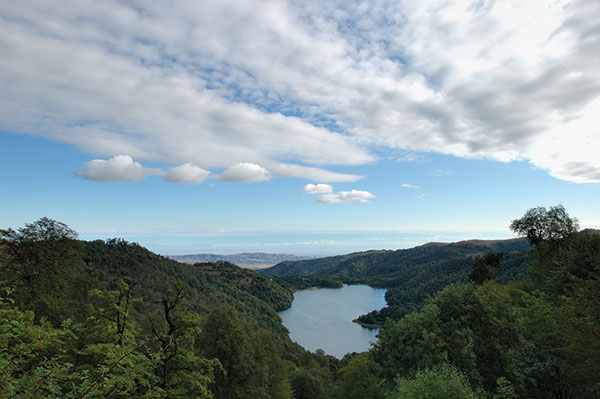
Year of foundation: 2008
Area (hectare): 12755
Olduğu yer: territory of Goygol, Dashkasan, and Goranboy districts.
Brief description: Goygol National Park was established on April 1, 2008, by the Order of the President of Azerbaijan Republic on the base of Goygol State Nature Reserve in the administrative territory of Goygol, Dashkasan, and Goranboy districts. After having the status of National Park, the territory of Goygol State Nature Reserve enlarged from 6739 hectares up to 12 755 hectares. Goygol National Park is located on the North-East part of Lesser Caucasus, on the North Slope of Kapaz Mountain, on 1000-3060 m high from the sea level and encloses medium and high mountain-forest semitones, mountain forest-meadow, subalpine and alpine zones. National Park is called by the name of Goygol Lake. And the reason for that is its transparent water which reflects surrounding green forests and blue sky as a mirror. The principal aim of the establishment of Goygol National Park is protection endemic and endangered flora and fauna species, regulation of the stability of natural complexes, creation of more favorable condition in order to carry out scientific research works, environmental monitoring, ecological awareness of population and development of ecotourism in the tourist potentially areas. Cold climate with dry winter prevails in the area. The annual temperature of the weather wavers between 4-10 degrees. Annual precipitation is 600-900 mm. The longest river in Goygol National Park is the Aghsuchay – the right branch of the Kurakchay. The biggest lake in the area is Goygol – one of the most wonderful and marvelous lakes in Azerbaijan. In 1939 as a result of the earthquake that occurred in Ganca, Kapaz mountain was tumbled down, blocked up the Aghsuchay river, and the beautiful lake - Goygol was formed. There are small lakes, such as Maralgol, Garagol, Zeligol, Aggol, Shamligol and etc. in the area. The main part of the national park has a rich vegetation cover. The mountain-forest, mountain-steppe, subalp, and alpine mountain-meadow vegetation ecosystem are spread in the area. The mountain forests covering 1100-2200 m height have a very rich vegetation cover and contain 80 trees and bush species. The main part of the forests is represented by oriental beech, oriental oak, Caucasian hornbeam, birch, ash tree, sharp-leaved maple, lime-tree of small-leaved trees, Kokh pine of coniferous. Of shrubs, cornel, barberry, dog rose, medlar, spindle-tree, blackberry, of herbs, Caucasian violet, dandelion, bellflower, noble chamomille, fescue, mat-grass and meadow-grass and etc. are met. They are especially spread in subalpine meadows. Goygol National Park is also rich for its fauna. Of mammals, Caucasian red deer, roe deer, brown bear, billy goat, badger, forest cat, sable, lynx, hare, squirrel, fox, hedgehog, Caucasian mole and etc., of birds quail, stock dove, woodcock, bearded vulture, black vulture, Egyptian vulture, eagle owl, owl, swan, black woodpecker, golden oriole, woodlark, mistle thrush and etc. are spread in the area. Rare species - Caucasian red deer and forel fish (in Goygol lake) are protected in the national park. The beautiful and variegated nature, rich flora, and fauna of Goygol National Park will enable to organization and development of ecotourism in the area by attracting tourists and visitors.
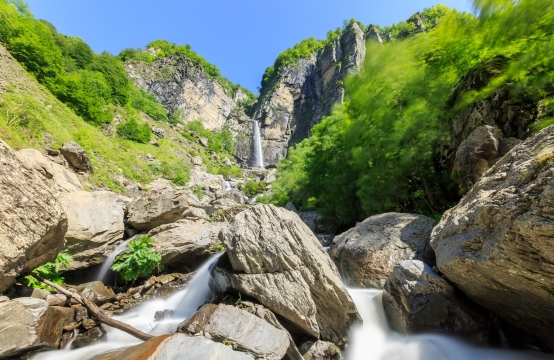 Name: Shahdagh National Park
Name: Shahdagh National Park
Year of foundation: 2006
Area (hectare): 115895
Location: territory of Guba, Gusar, Ismayilli, Gabala, Oghuz, and Shamakhi districts
Brief description: Shahdag National Park was established in accordance with the decree of the President of the Republic of Azerbaijan № 1814, dated December 8, 2006. Its territory is primarily 115895 ha. Ismayilli and Pirgulu State Nature Reserves consist of 21014 ha, state forest foundation lands located in the administrative territories of Guba, Gusar, Ismayilli, Gabala, Oghuz, and Shamakhi regions compose 81797 ha and useless summer pastures in mountains situated in the heights of boundaries of those regions compose 13084 ha of the National Park. The territory of the National Park was enlarged 14613 ha with the decree of the Cabinet of Ministers of the Republic of Azerbaijan № 193/S, dated July 8, 2010, hence its territory was reached 130508 ha. The aim of the establishment of the Shahdag National Park is rehabilitation, maintenance, and management of global mountain forests and pasture ecosystems located in high mountainous areas including various endemic and endangered species and transboundary migratory animals, preservation of fertile soil layer, protection, reproduction, and enrichment of fauna and flora species characteristic for the area, as well as regulation of natural complex stability, the offer of all necessary facilities for the implementation of scientific-research works, environmental monitoring, environmental enlightenment of population and provision of development of ecotourism in the territory which has great tourism potential. The height of the National Park territory has substantially caused its climatic diversity, fertility of flora soils, and richness of animal planet. The forests located in the territory are popular with rich, fascinating, and picturesque landscapes. Vertical fluctuation and scatter of relief, complex climate conditions, and soil lay have triggered a pretty great diversity of flora.

Name: Samur-Yalama National Park
Year of foundation: 2012
Area (hectare): 11772,45
Location: District of Khachmaz
Brief description: Samur-Yalama National Park was established in the administrative territory of the district of Khachmaz by the Order of the President of the Republic of Azerbaijan of November 5, 2012. The Park covers 11772.45 hectares given in the appendix land plan of the public forest fund lands in the administrative territory of the district of Khachmaz. The National Park is rich in such herbs as dog rose, garlic, St John’s wort, blooming sally, melissa. Soil types are meadow-forest, chestnut, and light chestnut. Meadows and shrubberies are widespread. Flat forests are encountered as well. The major representatives of the animal kingdom in Khachmaz are a feral pig, raccoon, pheasant, partridge, and so on. Coastal waters are rich in fish. There are thermal and mineral springs. Khachmaz is favorable for hunting and fishing. The Association of Hunters operates here and “Guealan Goelue” Reserve is under the Association.



